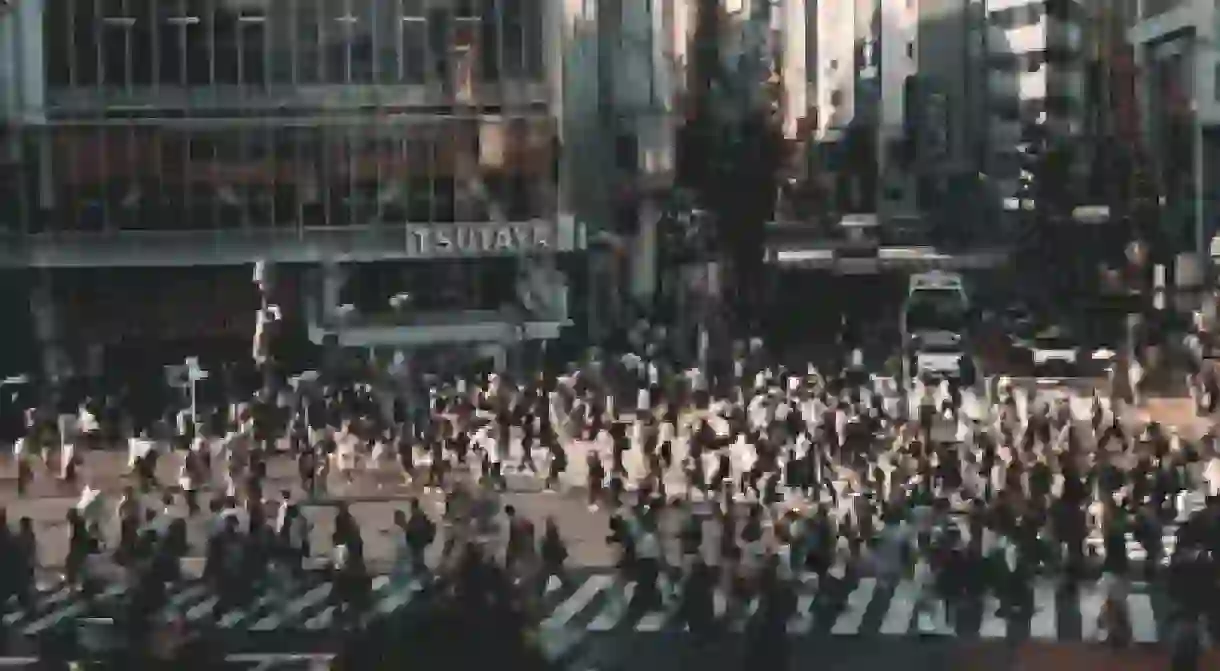A Short History of Tokyo’s Shibuya Crossing

Tokyo’s Shibuya Station handles an average of over 2.4 million passengers each day. This makes Shibuya Crossing a pedestrian scramble at the mouth of Shibuya Station’s Hachikō Exit, and one of the busiest thoroughfares in the world. Approximately 2,500 people are thought to cross it at a time. It’s an icon of the vibrancy and energy that Tokyo is known for and one of the city’s most iconic attractions.
What’s the attraction of Shibuya Station?
With so many subway and bus lines stopping by Shibuya, the logistical appeal for the average Tokyoite is obvious. After a night of dancing, drinking, karaoke or dining, friends from all over the city can easily catch the last train home or wait for the stations to open again in the morning.
Shibuya is home to countless bars, clubs and restaurants, but it has a reputation for belonging to the city’s fashionable youth. Popular chains like Forever 21 and Uniqlo have large branches here, as well as the iconic Shibuya 109 and 109 Men’s malls – not to mention the handful of department stores scattered just steps from the station. Shibuya is also known as a popular choice for those under 20 years old – those who can’t yet get into the stylish clubs at Roppongi or the bars in Shinjuku.



The history of Shibuya Crossing
The origins of Shibuya Station date back over 100 years ago, when operations kick-started in 1885. Back then, it served as a stop on the Shinagawa Line, which has since expanded and is now known as the JR Yamanote Line. Today, Shibuya Station serves more than eight different lines and is operated jointly by the JR East, Keio, Tokyu and Tokyo Metro subway companies. Tokyu Corporation, one of the major operators of Shibuya Station, is planning a 47-storey commercial building to be completed in 2019. This new structure will be the tallest in Shibuya – just one more reason to visit Shibuya Crossing, Tokyo’s busiest pedestrian thoroughfare.







The legend of Hachikō
Exit 8 of Shibuya Station is known as the Hachikō Exit, so-called because of the bronze statue of the famous dog in the plaza outside. Hachikō was a dog who lived during the 1920s, and every day the dog would return to Shibuya Station to wait for his owner, professor Ueno, to come home from work. Hachikō became a familiar sight, and the two continued in this way for nearly a year until one day when the professor did not return. He’d suffered a brain haemorrhage at work and passed away suddenly without saying goodbye.
Remarkably, for the next nine years, Hachikō could be found waiting for his owner in the same spot, at the same time each day. When his story was reported by one of the professor’s former students, Hachikō went down in history. The statue was erected in 1934, but Hachikō died from cancer one year later, at the age of 11.

Hollywood hotspots
Shibuya Crossing has become symbolic of Tokyo. The neon billboards screaming advertisements at the crowds, the sheer quantity of foot traffic and the size of the free-for-all represent the ultra-modern side of the city that outsiders are more familiar with. This has made it a perfect backdrop for Hollywood films like Lost in Translation (2003) and The Fast and The Furious: Tokyo Drift (2006).
















